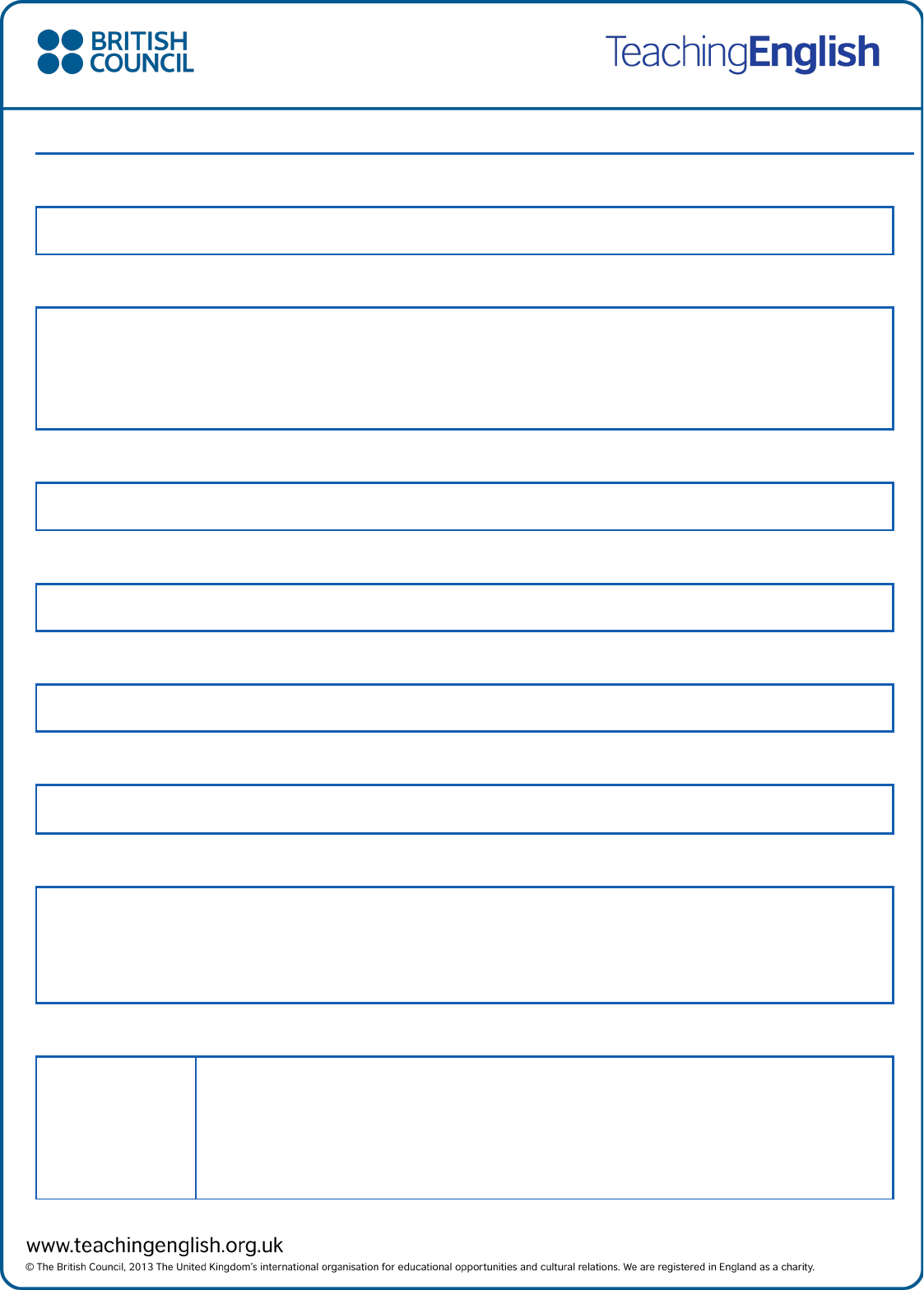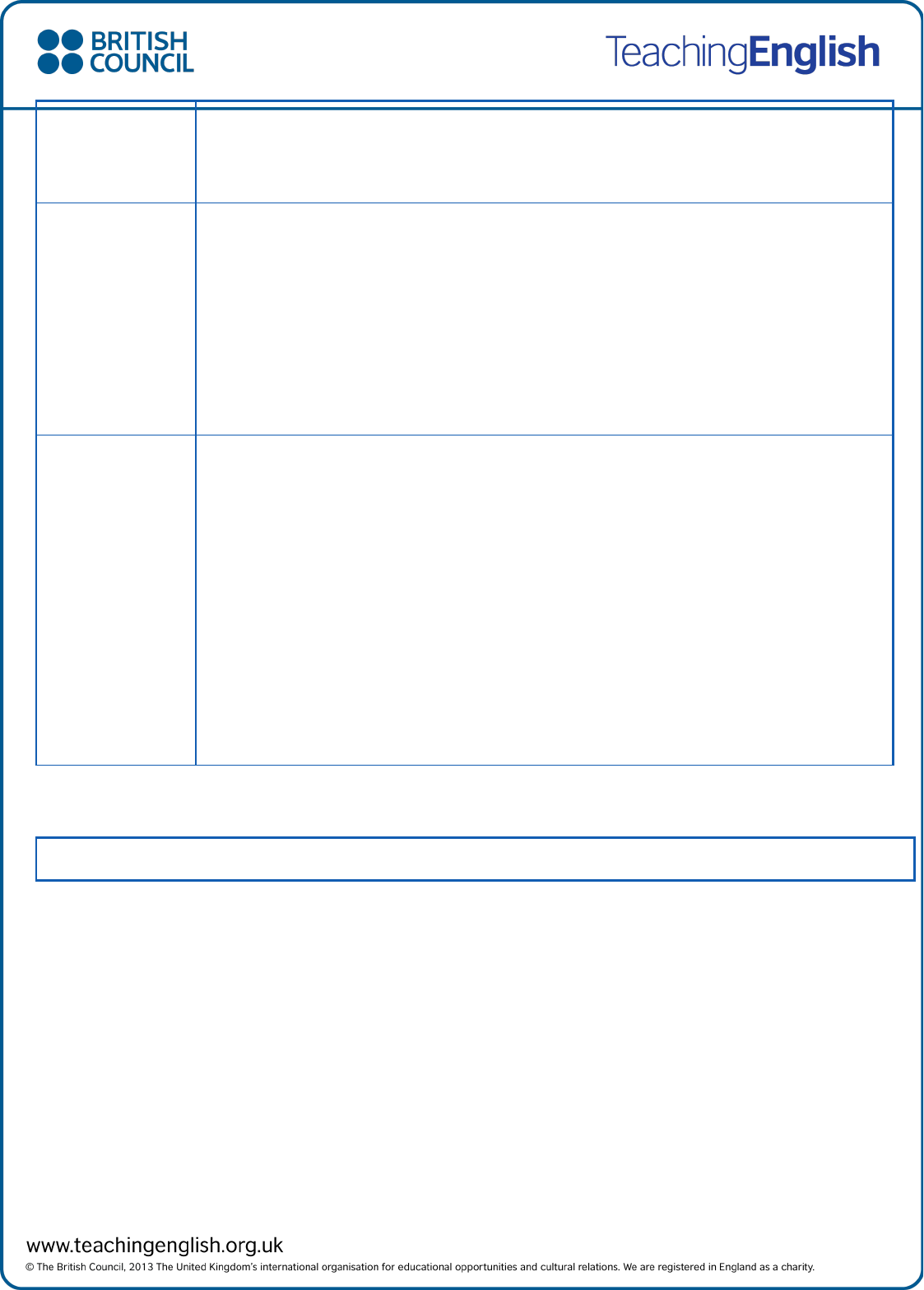
Lesson plan
The fastest and the slowest
Topic
Animals
Aims
• To teach students how to use comparatives with quantifiers
• To revise irregular adjectives
• To practice agreeing and disagreeing and giving opinions
• To develop students’ speaking and listening skills
Age group
Teens
Level
B1
Time
60 minutes
Materials
• The fastest and the slowest student worksheet
Introduction
In this lesson students practise speaking, reading and writing while talking about the fastest and
slowest animals. The grammar focus is comparatives and superlatives with quantifiers.
Students also learn some unusual animal vocabulary.
Procedure
1. Lead -in:
Brainstorm
• Draw a spider map on one side of the board with ‘animals’ in the middle
and three branches of ‘wild animals’ (with ‘sea’, ‘land’, ‘air’) ‘farm animals’,
‘pets’. Elicit lots of animal words and write them in the diagram. Have a
limited time for this brainstorming stage (4 or 5 minutes)

Lesson plan
• On the board write:
_______ is a lot faster/slower than _______.
_______ quite a bit faster/slower than _______.
_______ not much faster/slower than _______.
• Circle two of the animals in the spidergram and invite a student to ameka
sentence comparing their speed. E.g. A horse is a lot faster than a
hedgehog
• Choose 3 students: A, B and C. Student A chooses an animal from the
spidergram. Student B chooses a different animals. Student C makes a
sentence comparing their speed.
• Write these phrases on the board for giving your opinion, agreeing and
disagreeing:
Giving your opinion Agreeing & Disagreeing
In my opinion… I agree (with you)
I reckon / think…. I disagree (with you)
• Invite the other students to say whether they agree or not with Student C’s
sentence. Encourage students to use some of the useful language on the
board.
2. Task 1:
Ordering
animals
• Dictate these twelve animals for students to write: elephant; giraffe; giant
tortoise; Peregrine falcon; spider; black mamba snake; chicken; garden
snail; human; cheetah; ostrich; greyhound
• Students compare their words in pairs. Write the animals on the board for
students to check their spelling.
• In pairs, students rewrite the list of twelve animals from the fastest (1) to
the slowest (12). The two students have to agree so they need to discuss
each animal. Remind students to use the structures from the board. Give
students a time limit of 5-6 minutes for this stage.
• Join up pairs of students into groups of four. They compare their lists and,
if there are differences, they compile a new list on which they all agree.
• Compile one class list with all of the students. On the board write:
Which is the fastest /slowest animal in the list? And then write the
numbers 1-10.
• Elicit the fastest and slowest animals from students (groups will probably
agree on these two) and write them in the list. Then have a class

Lesson plan
discussion and decide on the order of the other animals, compiling the list
as the class reaches agreement.
3. Task:
reading
• Give students the workseet with Task 1
• Students read the text quickly to check their list against the actual animal
speeds. Get some feedback.
• Students read the text again, looking at the information about the other
animals. Help with any unknown vocabulary or encourage students to use
dictionaries or an online search.
4. Extension
• On the board write: heavy light big small
• Choose three students; A, B and C. Student A chooses an animal from
the list. Student B chooses a different animal. Student C makes a
sentence comparing them using a quantifier and heavier, lighter, bigger or
smaller. Invite students to agree or disagree.
• Students write four sentences using animals from the list, a quantifier and
heavier, lighter, bigger or smaller. Monitor students as they write. Walk
around the room, reading the sentences and telling students whether you
agree with them or not.
Contributed by
Katherine Bilsborough
